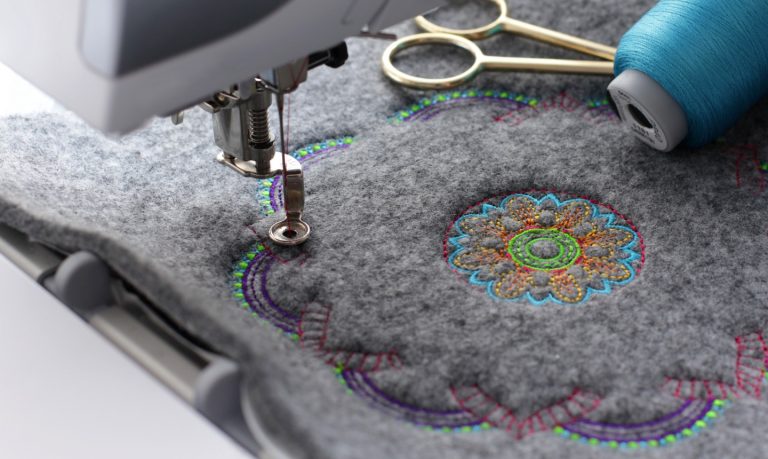Reliable Digitizing for Embroidery: Quick Turnaround
Streamlining the Art of Embroidery Digitizing: Step-by-Step Overview
As modern technology proceeds to breakthrough, the digitization process has actually come to be extra accessible, enabling enthusiasts to bring their intricate layouts to life with simplicity. In this guide, we will certainly unwind the intricacies of needlework digitizing, damaging down each action carefully to enhance the procedure and empower both newbies and skilled embroiderers alike.
Understanding Needlework Digitizing Software Application
Embroidery digitizing software application functions as a vital device for changing elaborate styles right into electronic styles suitable with needlework equipments, helping with precise sewing and personalization. This specific software application permits customers to import numerous photo data styles, such as JPG or PNG, and convert them right into embroidery machine-readable styles like DST, EXP, or PES - Digitizing for Embroidery. By using features like stitch modifying, padding alternatives, and thread color choice, digitizing software application enables individuals to manage every facet of the design process
In addition, progressed embroidery digitizing software supplies tools for producing complicated layouts, changing stitch density, and including detailed information. Users can likewise preview the style prior to stitching it out, guaranteeing precision and minimizing errors. Furthermore, several software application supply automatic attributes that help simplify the digitizing process, conserving time and initiative.
Recognizing the abilities of needlework digitizing software application is vital for attaining high-quality lead to embroidery tasks. By understanding this device, needlework fanatics and experts can unleash their imagination and bring intricate styles to life with precision and performance.

Picking the Right Layout Data
After acquainting yourself with the abilities of needlework digitizing software application, the next critical action in the procedure is picking the best style documents for your job. Digitizing for Embroidery. When choosing a design apply for needlework digitizing, it's important to think about the intricacy of the design, the size of the last product, and the sort of textile you will certainly be dealing with
For complex styles with fine details, a high-resolution image or vector data is suggested to ensure that the needlework equipment can properly replicate the style. Furthermore, the dimension of the end product plays a significant role in selecting the appropriate style data. Bigger styles might call for greater resolution documents to maintain quality and sharpness.
Moreover, the kind of textile you will certainly be stitching on affects the selection of design file. Various fabrics may require modifications in the design documents to guarantee that the stitches are effectively aligned and the layout shows up as intended. By meticulously selecting the appropriate layout file based upon these aspects, you can set yourself up for an effective needlework digitizing procedure.
Digitizing Devices and Methods
Utilizing specialized software program and accuracy methods, digitizing devices are essential in transforming detailed styles right into embroidery-ready documents. Needlework digitizing software, such as Wilcom, Hatch, or Embrilliance, provides the necessary platform to convert artwork into stitch information. These programs provide attributes like stitch editing and enhancing, rug alternatives, and lettering tools to guarantee the design equates effortlessly onto material.
One of the crucial strategies in digitizing is producing a clear course for the needlework device to comply with. This involves digitizing each element of the style with precision, identifying stitch types, densities, and directions. By utilizing devices like digitizing tablet computers or software-specific plugins, embroiderers can attain a high level of precision in their digitized layouts.
Furthermore, mastering the art of rug sewing is important for generating quality needlework. Underlay sewing maintains the fabric and produces a foundation for the layout, ensuring that the last item is both visually attractive and durable. By comprehending these digitizing devices and strategies, embroiderers can boost their craft and bring intricate layouts to life with precision and performance.
Customizing Stitch Types and Instructions
Having developed a structure in digitizing tools and strategies, an essential facet in recommended you read progressing embroidery craftsmanship depends on customizing stitch types and instructions with accuracy and objective. The selection of stitch types can considerably influence the overall look and structure of the embroidered layout. Satin stitches, known for their smooth and shiny surface, job well for producing boundaries and text. On the various other hand, fill stitches are optimal for covering bigger locations effectively. By tactically incorporating these stitch kinds, embroiderers can achieve deepness and measurement in their designs.
Additionally, the direction of stitches plays an important function in boosting the aesthetic allure of the last needlework. By experimenting with various stitch angles and patterns, embroiderers can bring their styles to life with exceptional information and details.
Testing and Refining Your Digitized Style
To guarantee the precision and quality of your digitized design, extensive testing and refinement are crucial actions in the embroidery digitizing procedure. Once you have completed the digitization of your layout, it is important to check it prior to proceeding with the real embroidery. Testing allows you to identify any possible concerns such as thread breaks, stitch density troubles, or layout distortions that might influence the outcome.

After testing, it is essential to improve your digitized layout based on the responses from the examination sew-out. This may include tweaking stitch settings, adjusting densities, or making see this site changes to the overall style to achieve the desired outcome. By iterating with screening and refinement, you can adjust your special info digitized style to excellence prior to moving ahead with the actual embroidery process.
Conclusion
Finally, grasping the art of embroidery digitizing requires a comprehensive understanding of the software, choosing the appropriate style documents, utilizing digitizing devices and methods, customizing stitch types and directions, and screening and refining the digitized design. By following these steps, embroiderers can simplify the digitizing procedure and produce high-grade embroidered designs with precision and efficiency.